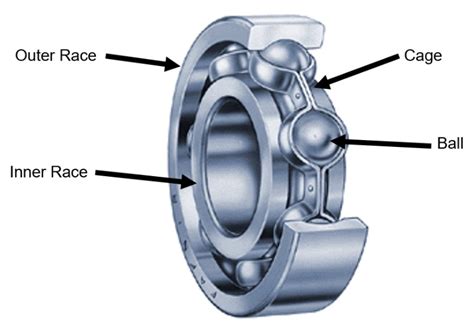Electric Motor Bearings: The Heartbeat of Your Machinery
Electric motors are essential components in various industrial and domestic applications, and their performance depends heavily on the reliability of their bearings. Electric motor bearings play a crucial role in minimizing friction, supporting loads, and ensuring smooth rotation. This article delves into the world of electric motor bearings, providing comprehensive insights into their types, applications, maintenance, and more.
Types of Electric Motor Bearings
Electric motor bearings come in different types to suit specific applications and performance requirements:
1. Ball Bearings:
- Key features: Contain small, spherical balls that roll between two races.
- Advantages: Low friction, high speeds, and radial load capacity.
- Applications: Fans, pumps, and small electric motors.

2. Roller Bearings:
- Key features: Utilize cylindrical or tapered rollers instead of balls.
- Advantages: High load capacity, resistance to shock and vibration, and axial load capacity.
- Applications: Heavy-duty machinery, conveyor systems, and gearboxes.

3. Sleeve Bearings:
- Key features: Consist of a cylindrical shaft rotating within a bearing housing.
- Advantages: Low noise, high load capacity, and self-lubricating capabilities.
- Applications: Large electric motors, compressors, and marine engines.
Applications of Electric Motor Bearings
Electric motor bearings find applications in a wide range of industries:
1. Industrial:
- Key applications: Conveyors, pumps, fans, compressors, and machine tools.

2. Commercial:
- Key applications: HVAC systems, elevators, escalators, and automated machinery.
3. Domestic:
- Key applications: Washing machines, dryers, refrigerators, and power tools.
Lubrication of Electric Motor Bearings
Proper lubrication is essential for extending the lifespan of electric motor bearings:
-
Oil Lubrication: Oil-lubricated bearings require regular oil changes and monitoring.
-
Grease Lubrication: Grease-lubricated bearings offer longer service intervals and are suitable for harsh environments.
-
Solid Lubrication: Sleeve bearings often rely on self-lubricating materials to reduce friction.
Maintenance of Electric Motor Bearings
Regular maintenance practices are crucial for ensuring optimal performance of electric motor bearings:
-
Inspections: Visual inspections, vibration analysis, and temperature monitoring can identify potential issues early.
-
Cleaning: Cleaning bearings and housings removes contaminants that may compromise performance.
-
Repairs: Prompt repairs or replacements are necessary to prevent catastrophic failures.
Failure Modes of Electric Motor Bearings
Common failure modes of electric motor bearings include:

-
Wear: Excessive friction can gradually wear down bearing components.
-
Contamination: Dirt, moisture, or abrasive particles can enter bearings and cause damage.
-
Lubrication Failure: Insufficient or improper lubrication can lead to bearing failure.
-
Misalignment: Improper shaft alignment can induce excessive loads and premature bearing failure.
Troubleshooting Electric Motor Bearing Issues
Addressing electric motor bearing issues requires a systematic approach:
-
Identify Symptoms: Recognize signs of bearing failure, such as noise, vibration, or overheating.
-
Inspect the Bearing: Remove the bearing and inspect for damage, wear, or contamination.
-
Determine the Cause: Analyze the findings to identify the underlying cause of the failure.
-
Resolve the Issue: Repair or replace the bearing, correct misalignment, or address lubrication problems.
Advanced Features of Electric Motor Bearings
To meet specific application demands, electric motor bearings offer advanced features:
-
Ceramic Bearings: Offer high temperature resistance and corrosion resistance.
-
Sealed Bearings: Prevent contamination by sealing out external particles.
-
Shielded Bearings: Protect against dust and moisture while allowing some airflow.
Comparing Pros and Cons of Electric Motor Bearings
To make informed choices, consider the advantages and disadvantages of different bearing types:
| Bearing Type |
Advantages |
Disadvantages |
| Ball Bearings |
Low friction, high speeds, radial load capacity |
Limited axial load capacity, noise at high speeds |
| Roller Bearings |
High load capacity, shock resistance, axial load capacity |
Higher friction than ball bearings, require more space |
| Sleeve Bearings |
Low noise, high load capacity, self-lubricating |
Require more space, need frequent maintenance |
Interesting Stories and Lessons Learned
1. The Peril of Ignoring Maintenance: A manufacturing plant ignored bearing maintenance, resulting in a catastrophic failure that cost millions of dollars in downtime and repairs. Lesson: Regular maintenance is non-negotiable.
2. The Power of Proper Alignment: A conveyor system suffered repeated bearing failures due to misalignment. After correcting the alignment, bearing life increased dramatically. Lesson: Proper shaft alignment is crucial for long-term bearing performance.
3. The Importance of Contamination Control: A factory experienced bearing failures بسبب contamination from metal shavings. Installing dust seals and implementing strict cleaning protocols resolved the issue. Lesson: Contamination control is essential to protect bearings from premature failure.
Call to Action
Electric motor bearings play a vital role in ensuring the reliable operation of electric motors. By understanding their types, applications, maintenance practices, and advanced features, you can maximize their lifespan and prevent costly downtime. Regularly monitor and maintain your electric motor bearings to ensure optimal performance and longevity.
Additional Information
For more detailed information on electric motor bearings, refer to the following resources:
